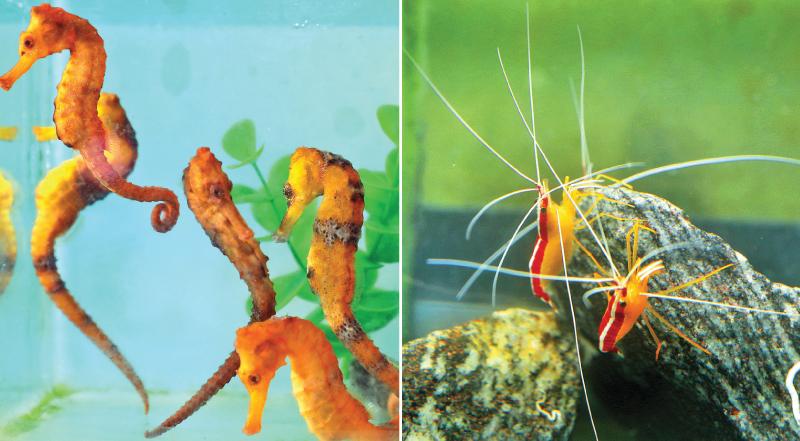
Aquamarines International (Pvt) Ltd. was founded in 1963 by Ananda Pathirana and operates as a BOI enterprise. The company specializes in breeding ornamental fish, particularly varieties of tropical sea fish and invertebrates targeting export markets in the United States, Europe and Far East.
Pathirana said that throughout the company’s existence, BOI had always been supportive and fostered its growth.
The main facility is in Ratmalana with the hatchery located in Ja-Ela. The company currently has around 80 employees.
Managing Director Yohan Pathirana who passed away recently had shared his expertise at the Aquarama 2017 forum and exhibition held in Guangzhou, China. His passion for fish led him to discover a native species which was named in his honour as PemberisPathirana by Dr. John Ernest Randall.
“Sustainability of the industry is always a key factor and divers should always be treated in a fair manner to ensure that very high standards of collection are upheld.Ornamental fish need to be screened for quality and the problem of poor decompression must be identified early, before exporting the fish. The packing of fish is also very important and the airline as middleman has a vital role to play,” Chairman Pathirana said.
He added “One comparative advantage that Sri Lanka does have is the bi-annual monsoons that hit different coasts. When one coast is hit, divers move to the other. This gives nature time to recover.”
Aquamarines is the only company in Sri Lanka that breeds sea horses and pipe fish. The fish bred at the Ja-Ela facility are imported varieties - sea horses are from Brazil while the pipe fish are from Indonesia. The facility is built on 5 acres of land and includes many breeding tanks for the fish and marine invertebrates such as cleaner shrimp.
“Cleaner shrimp are a local variety of brightly coloured invertebrates” said Accountant Srilal Perera.“Aquamarines’objective is to satisfy the most discerning aquarium hobbyist in the world. Therefore our company maintains very high standards of quality and other determining factors”.
Most of the tanks are devoted to the breeding of sea horses which include several containing tiny hatchling sea horses barely ½ cm in length. Other tanks hold fully grown adult sea horses. The breeding of sea horses is complex as it is the male fish that carry the eggs and a total of 300 to 400 are born alive.
The company also breeds about 200 varieties of brightly coloured clown fish which are the mainstay of the company. Perera said that the export demand for clown fish is a little higher than that for sea horses. Several of these clown fish varieties are rare including ‘Platinum’ which fetches a high price because it is difficult to breed.
Sri Lanka is a major exporter of ornamental fish with markets in the USA, Japan and the European Union. There are about 40 regular companies in Sri Lanka of which several are BOI enterprises engaged in breeding and exporting ornamental fish.
The market is divided into several components that include marine, freshwater, and brackish water fish and marine invertebrates. Marine fish and invertebrates are collected by experienced scuba divers from waters around the island. More important is the freshwater fish industry where the fish are commercially bred. Most freshwater fish exported from Sri Lanka are varieties such as Guppies, Swordtails, Platies, Tetras, Angels, Gouramis and Catfish. Of these the single biggest category are fancy Guppies which constitute about 60 – 70% of the market of freshwater fish exported.
It is estimated that Sri Lanka’s Aquarium Fish industry grows at approximately 4.7% annually. Sri Lanka’s market share is 2.7% of an estimated world market valued at around US$412 million. In the future, the focus will be on high value marine ornamental fish of which many are rare or endemic to Sri Lanka that will be bred by local exporters.
